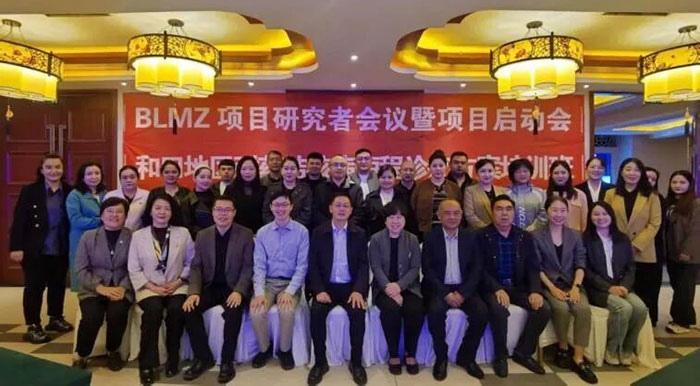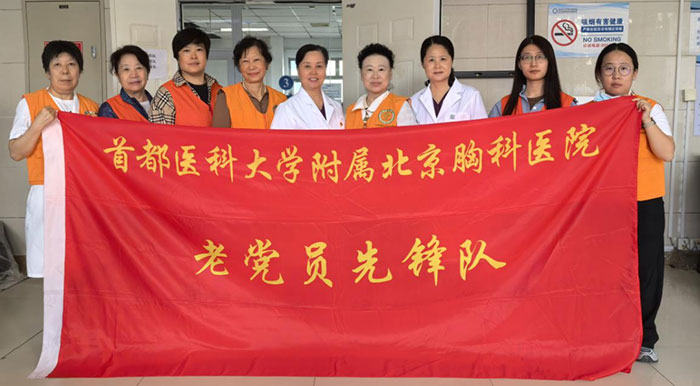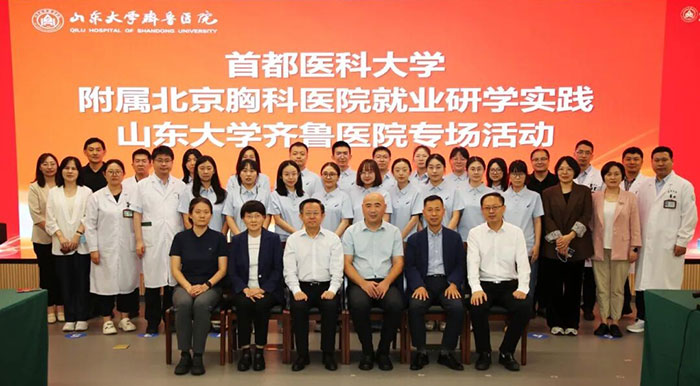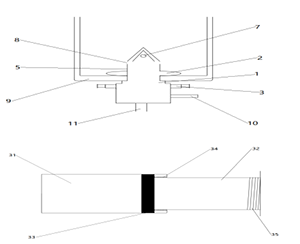2024年
No.3
PubMed
(tuberculosis[Title/Abstract]) OR (lung cancer[Title/Abstract])
Filters applied: from 2024/3/1 - 2024/3/31.
1. Cancer Cell. 2024 Mar 11;42(3):396-412.e5. doi: 10.1016/j.ccell.2023.12.021.
Epub 2024 Jan 18.
Cancer-associated fibroblast phenotypes are associated with patient outcome in non-small cell lung cancer.
Cords L(1), Engler S(2), Haberecker M(3), Rüschoff JH(3), Moch H(3), de Souza
N(2), Bodenmiller B(4).
Author information:
(1)Department of Quantitative Biomedicine, University of Zurich, 8057 Zurich, Switzerland; Institute of Molecular Health Sciences, ETH Zurich, 8049 Zurich, Switzerland; Life Science Zurich Graduate School, ETH Zurich and University of Zurich, 8057 Zurich, Switzerland.
(2)Department of Quantitative Biomedicine, University of Zurich, 8057 Zurich, Switzerland; Institute of Molecular Health Sciences, ETH Zurich, 8049 Zurich, Switzerland.
(3)Department of Pathology and Molecular Pathology, University Hospital Zurich, 8091 Zurich, Switzerland.
(4)Department of Quantitative Biomedicine, University of Zurich, 8057 Zurich, Switzerland; Institute of Molecular Health Sciences, ETH Zurich, 8049 Zurich, Switzerland. Electronic address: bernd.bodenmiller@uzh.ch.
Despite advances in treatment, lung cancer survival rates remain low. A better understanding of the cellular heterogeneity and interplay of cancer-associated fibroblasts (CAFs) within the tumor microenvironment will support the development of personalized therapies. We report a spatially resolved single-cell imaging mass cytometry (IMC) analysis of CAFs in a non-small cell lung cancer cohort of 1,070 patients. We identify four prognostic patient groups based on 11 CAF phenotypes with distinct spatial distributions and show that CAFs are independent prognostic factors for patient survival. The presence of tumor-like CAFs is strongly correlated with poor prognosis. In contrast, inflammatory CAFs and interferon-response CAFs are associated with inflamed tumor microenvironments and higher patient survival. High density of matrix CAFs is correlated with low immune infiltration and is negatively correlated with patient survival. In summary, our data identify phenotypic and spatial features of CAFs that are associated with patient outcome in NSCLC.
Copyright © 2023 The Author(s). Published by Elsevier Inc. All rights reserved.
DOI: 10.1016/j.ccell.2023.12.021
PMCID: PMC10929690
PMID: 38242124 [Indexed for MEDLINE]
2. J Thorac Oncol. 2024 Mar 4:S1556-0864(24)00079-0. doi:
10.1016/j.jtho.2024.02.011. Online ahead of print.
The International Association for the Study of Lung Cancer Lung Cancer Staging Project: Proposals for Revision of the TNM Stage Groups in the Forthcoming (Ninth) Edition of the TNM Classification for Lung Cancer.
Rami-Porta R(1), Nishimura KK(2), Giroux DJ(2), Detterbeck F(3), Cardillo G(4), Edwards JG(5), Fong KM(6), Giuliani M(7), Huang J(8), Kernstine KH Sr(9), Marom EM(10), Nicholson AG(11), Van Schil PE(12), Travis WD(13), Tsao MS(14), Watanabe SI(15), Rusch VW(16), Asamura H(17); Members of the IASLC Staging and Prognostic Factors Committee and of the Advisory Boards, and Participating Institutions.
Author information:
(1)Department of Thoracic Surgery, Hospital Universitari Mutua Terrassa, University of Barcelona, Terrassa, Barcelona, Spain; Network of Centers for Biomedical Research in Respiratory Diseases (CIBERES) Lung Cancer Group, Terrassa, Barcelona, Spain. Electronic address: rramip@yahoo.es.
(2)Cancer Research And Biostatistics (CRAB), Seattle, Washington.
(3)Department of Surgery, Yale University, New Haven, Connecticut.
(4)Department of Thoracic Surgery, Azienda Ospedaliera San Camillo-Forlanini, Rome, Italy; UniCamillus-Saint Camillus International University of Health Science, Rome, Italy.
(5)Department of Cardiothoracic Surgery, Sheffield Teaching Hospitals NHS Foundation Trust, Northern General Hospital, Sheffield, United Kingdom.
INTRODUCTION: The TNM classification of lung cancer is periodically revised. The International Association for the Study of Lung Cancer collected and analyzed a new database to inform the forthcoming ninth edition of the TNM classification. The results are herewith presented.
METHODS: After exclusions, 76,518 patients from a total of 124,581 registered patients were available for analyses: 58,193 with clinical stage, 39,192 with pathologic stage, and 62,611 with best stage NSCLC. The proposed new N2 subcategories (N2a, involvement of single ipsilateral mediastinal or subcarinal nodal station, and N2b, involvement of multiple ipsilateral mediastinal nodal stations with or without involvement of the subcarinal nodal station) and the new M1c subcategories (M1c1, multiple extrathoracic metastases in one organ system, and M1c2, multiple extrathoracic metastases in multiple organ systems) were considered in the survival analyses. Several potential stage groupings were evaluated, using multiple analyses, including recursive partitioning, assessment of homogeneity within and discrimination between potential groups, clinical and statistical significance of survival differences, multivariable regression, and broad assessment of generalizability.
RESULTS: T1N1, T1N2a, and T3N2a subgroups are assigned to IIA, IIB, and IIIA stage groups, respectively. T2aN2b and T2bN2b subgroups are assigned to IIIB. M1c1 and M1c2 remain in stage group IVB. Analyses reveal consistent ordering, discrimination of prognosis, and broad generalizability of the proposed ninth edition stage classification of lung cancer.
CONCLUSIONS: The proposed stages for the ninth edition TNM improve the granularity of nomenclature about anatomic extent that has benefits as treatment approaches become increasingly differentiated and complex.
Copyright © 2024 International Association for the Study of Lung Cancer.
Published by Elsevier Inc. All rights reserved.
DOI: 10.1016/j.jtho.2024.02.011
PMID: 38447919
3. J Thorac Oncol. 2024 Mar;19(3):451-464. doi: 10.1016/j.jtho.2023.11.002. Epub
2023 Nov 7.
Lung Cancer Risk Prediction Models for Asian Ever-Smokers.
Yang JJ(1), Wen W(2), Zahed H(3), Zheng W(2), Lan Q(4), Abe SK(5), Rahman MS(6), Islam MR(7), Saito E(8), Gupta PC(9), Tamakoshi A(10), Koh WP(11), Gao YT(12), Sakata R(13), Tsuji I(14), Malekzadeh R(15), Sugawara Y(14), Kim J(16), Ito H(17), Nagata C(18), You SL(19), Park SK(20), Yuan JM(21), Shin MH(22), Kweon SS(23), Yi SW(24), Pednekar MS(9), Kimura T(10), Cai H(2), Lu Y(14), Etemadi A(25), Kanemura S(14), Wada K(18), Chen CJ(26), Shin A(27), Wang R(28), Ahn YO(20), Shin MH(23), Ohrr H(29), Sheikh M(3), Blechter B(4), Ahsan H(30), Boffetta P(31), Chia KS(32), Matsuo K(33), Qiao YL(34), Rothman N(4), Inoue M(5), Kang D(27), Robbins HA(3), Shu XO(35).
Author information:
(1)Division of Epidemiology, Department of Medicine, Vanderbilt Epidemiology Center, Vanderbilt-Ingram Cancer Center, Vanderbilt University Medical Center, Nashville, Tennessee; Department of Surgery, University of Florida College of Medicine, Gainesville, Florida; University of Florida Health Cancer Center, Gainesville, Florida.
(2)Division of Epidemiology, Department of Medicine, Vanderbilt Epidemiology Center, Vanderbilt-Ingram Cancer Center, Vanderbilt University Medical Center, Nashville, Tennessee.
(3)International Agency for Research on Cancer, Lyon, France.
(4)Division of Cancer Epidemiology and Genetics, Occupational and Environmental Epidemiology Branch, National Cancer Institute, National Institutes of Health, Rockville, Maryland.
(5)Division of Prevention, National Cancer Center Institute for Cancer Control, Tokyo, Japan.
INTRODUCTION: Although lung cancer prediction models are widely used to support risk-based screening, their performance outside Western populations remains uncertain. This study aims to evaluate the performance of 11 existing risk prediction models in multiple Asian populations and to refit prediction models for Asians.
METHODS: In a pooled analysis of 186,458 Asian ever-smokers from 19 prospective cohorts, we assessed calibration (expected-to-observed ratio) and discrimination (area under the receiver operating characteristic curve [AUC]) for each model. In addition, we developed the "Shanghai models" to better refine risk models for Asians on the basis of two well-characterized population-based prospective cohorts and externally validated them in other Asian cohorts.
RESULTS: Among the 11 models, the Lung Cancer Death Risk Assessment Tool yielded the highest AUC (AUC [95% confidence interval (CI)] = 0.71 [0.67-0.74] for lung cancer death and 0.69 [0.67-0.72] for lung cancer incidence) and the Prostate, Lung, Colorectal, and Ovarian Cancer Screening Trial Model had good calibration overall (expected-to-observed ratio [95% CI] = 1.06 [0.90-1.25]). Nevertheless, these models substantially underestimated lung cancer risk among Asians who reported less than 10 smoking pack-years or stopped smoking more than or equal to 20 years ago. The Shanghai models were found to have marginal improvement overall in discrimination (AUC [95% CI] = 0.72 [0.69-0.74] for lung cancer death and 0.70 [0.67-0.72] for lung cancer incidence) but consistently outperformed the selected Western models among low-intensity smokers and long-term quitters.
CONCLUSIONS: The Shanghai models had comparable performance overall to the best existing models, but they improved much in predicting the lung cancer risk of low-intensity smokers and long-term quitters in Asia.
Copyright © 2023. Published by Elsevier Inc.
DOI: 10.1016/j.jtho.2023.11.002
PMID: 37944700 [Indexed for MEDLINE]
4. Lancet Glob Health. 2024 Mar;12(3):e509-e515. doi: 10.1016/S2214-109X(23)00544-2.
Beyond tuberculosis: a person-centred and rights-based approach to screening for
household contacts.
Calderwood CJ(1), Timire C(2), Mavodza C(3), Kavenga F(4), Ngwenya M(4), Madziva K(3), Fielding K(5), Dixon J(6), Ferrand RA(7), Kranzer K(8).
Author information:
(1)Faculty of Infectious and Tropical Diseases, London School of Hygiene & Tropical Medicine, London, UK; The Health Research Unit Zimbabwe, Biomedical Research and Training Institute, Harare, Zimbabwe. Electronic address: claire.calderwood2@lshtm.ac.uk.
(2)Faculty of Infectious and Tropical Diseases, London School of Hygiene & Tropical Medicine, London, UK; The Health Research Unit Zimbabwe, Biomedical Research and Training Institute, Harare, Zimbabwe; AIDS & TB Control Programme, Ministry of Health and Child Care, Harare, Zimbabwe.
(3)The Health Research Unit Zimbabwe, Biomedical Research and Training Institute, Harare, Zimbabwe.
(4)AIDS & TB Control Programme, Ministry of Health and Child Care, Harare, Zimbabwe.
(5)Faculty of Epidemiology and Population Health, London School of Hygiene & Tropical Medicine, London, UK.
Households affected by tuberculosis have syndemic vulnerability, reflecting a concentration of and interactions between multiple biomedical, psychosocial, and structural determinants of health. Traditional approaches to tuberculosis screening do not address pre-existing risks, such as undernutrition and other chronic conditions, or the indirect effects of tuberculosis, such as loss of livelihood. These pre-existing risks and consequences not only perpetuate the global tuberculosis epidemic but, for those affected, lead to poor health and deepen poverty. We propose reimagining tuberculosis screening as an opportunity to deliver a contextually relevant package of services that address the needs of households affected by tuberculosis. This approach puts people and their rights at the centre of efforts to end tuberculosis, and has equity at the core. This approach could support progress towards universal health coverage, benefiting communities and health systems. Leadership, flexibility in funding allocation, and innovative care models will be required to realise this approach at scale.
Copyright © 2024 The Author(s). Published by Elsevier Ltd. This is an Open
Access article under the CC BY 4.0 license. Published by Elsevier Ltd.. All
rights reserved.
DOI: 10.1016/S2214-109X(23)00544-2
PMID: 38365421 [Indexed for MEDLINE]
Conflict of interest statement: Declaration of interests CJC and RAF acknowledge
funding from the Wellcome Trust. All other authors declare no competing interests.
5. Nat Rev Gastroenterol Hepatol. 2024 Mar 13. doi: 10.1038/s41575-024-00907-2.
Online ahead of print.
Screening for liver fibrosis: lessons from colorectal and lung cancer screening.
Thiele M(1)(2), Kamath PS(3), Graupera I(4)(5)(6)(7), Castells A(5)(6)(7)(8), de Koning HJ(9), Serra-Burriel M(10), Lammert F(11)(12), Ginès P(13)(14)(15)(16).
Author information:
(1)Centre for Liver Research, Department of Gastroenterology and Hepatology, Odense University Hospital, Odense, Denmark.
(2)Department of Clinical Research, University of Southern Denmark, Odense, Denmark.
(3)Division of Gastroenterology and Hepatology, Mayo Clinic College of Medicine and Science, Rochester, MN, USA.
(4)Liver Unit Hospital Clínic, Barcelona, Catalonia, Spain.
(5)Institut d'Investigacions Biomèdiques August Pi i Sunyer (IDIBAPS), Barcelona, Catalonia, Spain.
Many countries have incorporated population screening programmes for cancer, such as colorectal and lung cancer, into their health-care systems. Cirrhosis is more prevalent than colorectal cancer and has a comparable age-standardized mortality rate to lung cancer. Despite this fact, there are no screening programmes in place for early detection of liver fibrosis, the precursor of cirrhosis. In this Perspective, we use insights from colorectal and lung cancer screening to explore the benefits, challenges, implementation strategies and pathways for future liver fibrosis screening initiatives. Several non-invasive methods and referral pathways for early identification of liver fibrosis exist, but in addition to accurate detection, screening programmes must also be cost-effective and demonstrate benefit through a reduction in liver-related mortality. Randomized controlled trials are needed to confirm this. Future randomized screening trials should evaluate not only the screening tests, but also interventions used to halt disease progression in individuals identified through screening.
© 2024. Springer Nature Limited.
DOI: 10.1038/s41575-024-00907-2
PMID: 38480849
6. IEEE Trans Pattern Anal Mach Intell. 2024 Apr;46(4):2316-2332. doi: 10.1109/TPAMI.2023.3330825. Epub 2024 Mar 6.
Revisiting Computer-Aided Tuberculosis Diagnosis.
Liu Y, Wu YH, Zhang SC, Liu L, Wu M, Cheng MM.
Tuberculosis (TB) is a major global health threat, causing millions of deaths annually. Although early diagnosis and treatment can greatly improve the chances of survival, it remains a major challenge, especially in developing countries. Recently, computer-aided tuberculosis diagnosis (CTD) using deep learning has shown promise, but progress is hindered by limited training data. To address this, we establish a large-scale dataset, namely the Tuberculosis X-ray (TBX11 K) dataset, which contains 11 200 chest X-ray (CXR) images with corresponding bounding box annotations for TB areas. This dataset enables the training of sophisticated detectors for high-quality CTD. Furthermore, we propose a strong baseline, SymFormer, for simultaneous CXR image classification and TB infection area detection. SymFormer incorporates Symmetric Search Attention (SymAttention) to tackle the bilateral symmetry property of CXR images for learning discriminative features. Since CXR images may not strictly adhere to the bilateral symmetry property, we also propose Symmetric Positional Encoding (SPE) to facilitate SymAttention through feature recalibration. To promote future research on CTD, we build a benchmark by introducing evaluation metrics, evaluating baseline models reformed from existing detectors, and running an online challenge. Experiments show that SymFormer achieves state-of-the-art performance on the TBX11 K dataset.
DOI: 10.1109/TPAMI.2023.3330825
PMID: 37934644 [Indexed for MEDLINE]
7. Lancet Respir Med. 2024 Mar 22:S2213-2600(24)00028-6. doi: 10.1016/S2213-2600(24)00028-6. Online ahead of print.
Classification of early tuberculosis states to guide research for improved care and prevention: an international Delphi consensus exercise.
Coussens AK(1), Zaidi SMA(2), Allwood BW(3), Dewan PK(4), Gray G(5), Kohli M(6), Kredo T(5), Marais BJ(7), Marks GB(8), Martinez L(9), Ruhwald M(6), Scriba TJ(10), Seddon JA(11), Tisile P(12), Warner DF(13), Wilkinson RJ(14), Esmail H(15), Houben RMGJ(16); International Consensus for Early TB (ICE-TB) group.
Author information:
(1)Infectious Diseases and Immune Defence Division, The Walter and Eliza Hall Institute of Medical Research (WEHI), Parkville, VIC, Australia; Centre for Infectious Diseases Research in Africa, University of Cape Town, Cape Town, South Africa; Institute of Infectious Disease and Molecular Medicine, and Department of Pathology, University of Cape Town, Cape Town, South Africa; Department of Medical Biology, University of Melbourne, Parkville, VIC, Australia.
(2)WHO Collaborating Centre on Tuberculosis Research and Innovation, Institute
for Global Health, and MRC Clinical Trials Unit, University College London, London, UK; Department of Public Health, National University of Medical Sciences, Rawalpindi, Pakistan.
(3)Division of Pulmonology, Department of Medicine, Stellenbosch University, Stellenbosch, South Africa.
(4)Tuberculosis and HIV, Bill & Melinda Gates Foundation, Seattle, WA, USA.
(5)Health Systems Research Unit, South Africa Medical Research Council, Cape Town, South Africa.
The current active-latent paradigm of tuberculosis largely neglects the documented spectrum of disease. Inconsistency with regard to definitions, terminology, and diagnostic criteria for different tuberculosis states has limited the progress in research and product development that are needed to achieve tuberculosis elimination. We aimed to develop a new framework of classification for tuberculosis that accommodates key disease states but is sufficiently simple to support pragmatic research and implementation. Through an international Delphi exercise that involved 71 participants representing a wide range of disciplines, sectors, income settings, and geographies, consensus was reached on a set of conceptual states, related terminology, and research gaps. The International Consensus for Early TB (ICE-TB) framework distinguishes disease from infection by the presence of macroscopic pathology and defines two subclinical and two clinical tuberculosis states on the basis of reported
symptoms or signs of tuberculosis, further differentiated by likely infectiousness. The presence of viable Mycobacterium tuberculosis and an associated host response are prerequisites for all states of infection and disease. Our framework provides a clear direction for tuberculosis research, which will, in time, improve tuberculosis clinical care and elimination policies.
Copyright © 2024 Elsevier Ltd. All rights reserved.
DOI: 10.1016/S2213-2600(24)00028-6
PMID: 38527485
8. Lancet Infect Dis. 2024 Mar 19:S1473-3099(24)00007-0. doi: 10.1016/S1473-3099(24)00007-0. Online ahead of print.
Global, regional, and national age-specific progress towards the 2020 milestones of the WHO End TB Strategy: a systematic analysis for the Global Burden of Disease Study 2021.
GBD 2021 Tuberculosis Collaborators.
BACKGROUND: Global evaluations of the progress towards the WHO End TB Strategy 2020 interim milestones on mortality (35% reduction) and incidence (20% reduction) have not been age specific. We aimed to assess global, regional, and national-level burdens of and trends in tuberculosis and its risk factors across five separate age groups, from 1990 to 2021, and to report on age-specific progress between 2015 and 2020.
METHODS: We used the Global Burden of Diseases, Injuries, and Risk Factors Study 2021 (GBD 2021) analytical framework to compute age-specific tuberculosis mortality and incidence estimates for 204 countries and territories (1990-2021 inclusive). We quantified tuberculosis mortality among individuals without HIV co-infection using 22 603 site-years of vital registration data, 1718 site-years of verbal autopsy data, 825 site-years of sample-based vital registration data, 680 site-years of mortality surveillance data, and 9 site-years of minimally invasive tissue sample (MITS) diagnoses data as inputs into the Cause of Death Ensemble modelling platform. Age-specific HIV and tuberculosis deaths were established with a population attributable fraction approach. We analysed all available population-based data sources, including prevalence surveys, annual case notifications, tuberculin surveys, and tuberculosis mortality, in DisMod-MR 2.1 to produce internally consistent age-specific estimates of tuberculosis incidence, prevalence, and mortality. We also estimated age-specific tuberculosis mortality without HIV co-infection that is attributable to the independent and combined effects of three risk factors (smoking, alcohol use, and diabetes). As a secondary analysis, we examined the potential impact of the COVID-19 pandemic on tuberculosis mortality without HIV co-infection by comparing expected tuberculosis deaths, modelled with trends in tuberculosis deaths from 2015 to 2019 in vital registration data, with observed tuberculosis deaths in 2020 and 2021 for countries with available cause-specific mortality data.
FINDINGS: We estimated 9·40 million (95% uncertainty interval [UI] 8·36 to 10·5)
tuberculosis incident cases and 1·35 million (1·23 to 1·52) deaths due to tuberculosis in 2021. At the global level, the all-age tuberculosis incidence rate declined by 6·26% (5·27 to 7·25) between 2015 and 2020 (the WHO End TB strategy evaluation period). 15 of 204 countries achieved a 20% decrease in all-age tuberculosis incidence between 2015 and 2020, eight of which were in western sub-Saharan Africa. When stratified by age, global tuberculosis incidence rates decreased by 16·5% (14·8 to 18·4) in children younger than 5 years, 16·2% (14·2 to 17·9) in those aged 5-14 years, 6·29% (5·05 to 7·70) in those aged 15-49 years, 5·72% (4·02 to 7·39) in those aged 50-69 years, and 8·48% (6·74 to 10·4) in those aged 70 years and older, from 2015 to 2020. Global tuberculosis deaths decreased by 11·9% (5·77 to 17·0) from 2015 to 2020. 17 countries attained a 35% reduction in deaths due to tuberculosis between 2015 and 2020, most of which were in eastern Europe (six countries) and central
Europe (four countries). There was variable progress by age: a 35·3% (26·7 to 41·7) decrease in tuberculosis deaths in children younger than 5 years, a 29·5% (25·5 to 34·1) decrease in those aged 5-14 years, a 15·2% (10·0 to 20·2) decrease in those aged 15-49 years, a 7·97% (0·472 to 14·1) decrease in those aged 50-69 years, and a 3·29% (-5·56 to 9·07) decrease in those aged 70 years and older. Removing the combined effects of the three attributable risk factors would have reduced the number of all-age tuberculosis deaths from 1·39 million (1·28 to 1·54) to 1·00 million (0·703 to 1·23) in 2020, representing a 36·5% (21·5 to 54·8) reduction in tuberculosis deaths compared to those observed in 2015. 41 countries were included in our analysis of the impact of the COVID-19 pandemic on tuberculosis deaths without HIV co-infection in 2020, and 20 countries were included in the analysis for 2021. In 2020, 50 900 (95% CI 49 700 to 52 400) deaths were expected across all ages, compared to an observed 45 500 deaths, corresponding to 5340 (4070 to 6920) fewer deaths; in 2021, 39 600 (38 300 to 41 100) deaths were expected across all ages compared to an observed 39 000 deaths, corresponding to 657 (-713 to 2180) fewer deaths.
INTERPRETATION: Despite accelerated progress in reducing the global burden of tuberculosis in the past decade, the world did not attain the first interim milestones of the WHO End TB Strategy in 2020. The pace of decline has been unequal with respect to age, with older adults (ie, those aged >50 years) having the slowest progress. As countries refine their national tuberculosis programmes and recalibrate for achieving the 2035 targets, they could consider learning from the strategies of countries that achieved the 2020 milestones, as well as consider targeted interventions to improve outcomes in older age groups.
FUNDING: Bill & Melinda Gates Foundation.
Copyright © 2024 The Author(s). Published by Elsevier Ltd. This is an Open Access article under the CC BY 4.0 license. Published by Elsevier Ltd.. All rights reserved.
DOI: 10.1016/S1473-3099(24)00007-0
PMID: 38518787
9. Cell Discov. 2024 Mar 29;10(1):36. doi: 10.1038/s41421-024-00653-4.
Mycobacterium tuberculosis inhibits METTL14-mediated m(6)A methylation of Nox2 mRNA and suppresses anti-TB immunity.
Ma M(#)(1)(2), Duan Y(#)(1)(2), Peng C(#)(1)(2), Wu Y(3), Zhang X(4), Chang B(5), Wang F(1)(2), Yang H(1), Zheng R(1), Cheng H(1)(2), Cheng Y(1)(2), He Y(1)(2), Huang J(1)(2), Lei J(1)(2), Ma H(1)(2), Li L(1)(2), Wang J(1), Huang X(1), Tang F(1)(2), Liu J(4), Li J(5), Ying R(6), Wang P(6), Sha W(6), Gao Y(7), Wang L(8)(9), Ge B(10)(11)(12).
Author information:
(1)Shanghai Key Laboratory of Tuberculosis, Shanghai Pulmonary Hospital, Key Laboratory of Pathogen-Host Interaction, Ministry of Education, Tongji University School of Medicine, Shanghai, China.
(2)Department of Microbiology and Immunology, Tongji University School of Medicine, Shanghai, China.
(3)Institute for Regenerative Medicine, Shanghai East Hospital, Shanghai Key Laboratory of Signaling and Disease Research, School of Life Sciences and Technology, Tongji University, Shanghai, China.
(4)State Key Laboratory of Protein and Plant Gene Research, Peking-Tsinghua Center for Life Sciences, School of Life Sciences, Peking University, Beijing, China.
(5)State Key Laboratory of Cell Biology, Shanghai Key Laboratory of Molecular Andrology, CAS Center for Excellence in Molecular Cell Science, Shanghai Institute of Biochemistry and Cell Biology, Chinese Academy of Sciences, University of Chinese Academy of Sciences, Shanghai, China.
Internal N6-methyladenosine (m6A) modifications are among the most abundant modifications of messenger RNA, playing a critical role in diverse biological and pathological processes. However, the functional role and regulatory mechanism of m6A modifications in the immune response to Mycobacterium tuberculosis infection remains unknown. Here, we report that methyltransferase-like 14 (METTL14)-dependent m6A methylation of NAPDH oxidase 2 (Nox2) mRNA was crucial for the host immune defense against M. tuberculosis infection and that M. tuberculosis-secreted antigen EsxB (Rv3874) inhibited METTL14-dependent m6A methylation of Nox2 mRNA. Mechanistically, EsxB interacted with p38 MAP kinase and disrupted the association of TAB1 with p38, thus inhibiting the TAB1-mediated autophosphorylation of p38. Interaction of EsxB with p38 also impeded the binding of p38 with METTL14, thereby inhibiting the p38-mediated phosphorylation of METTL14 at Thr72. Inhibition of p38 by EsxB restrained liquid-liquid phase separation (LLPS) of METTL14 and its subsequent interaction with METTL3, preventing the m6A modification of Nox2 mRNA and its association with the m6A-binding protein IGF2BP1 to destabilize Nox2 mRNA, reduce ROS levels, and increase intracellular survival of M. tuberculosis. Moreover, deletion or mutation of the phosphorylation site on METTL14 impaired the inhibition of ROS level by EsxB and increased bacterial burden or histological damage in the lungs during infection in mice. These findings identify a previously unknown mechanism that M. tuberculosis employs to suppress host immunity, providing insights that may empower the development of effective immunomodulators that target M. tuberculosis.
© 2024. The Author(s).
DOI: 10.1038/s41421-024-00653-4
PMCID: PMC10978938
PMID: 38548762
Conflict of interest statement: The authors declare no competing interests.
10. J Clin Oncol. 2024 Mar 27:JCO2301780. doi: 10.1200/JCO.23.01780. Online ahead of print.
Pack-Year Smoking History: An Inadequate and Biased Measure to Determine Lung
Cancer Screening Eligibility.
Potter AL(1), Xu NN(2), Senthil P(1), Srinivasan D(1), Lee H(3), Gazelle GS(4)(5), Chelala L(6), Zheng W(7)(8), Fintelmann FJ(4), Sequist LV(9), Donington J(10), Palmer JR(2), Yang CJ(1).
Author information:
(1)Division of Thoracic Surgery, Department of Surgery, Massachusetts General Hospital, Boston, MA.
(2)Slone Epidemiology Center at Boston University, Boston, MA.
(3)Biostatistics Center, Massachusetts General Hospital, Boston, MA.
(4)Department of Radiology, Massachusetts General Hospital, Boston, MA.
(5)Institute for Technology Assessment, Massachusetts General Hospital, Boston, MA.
PURPOSE: Pack-year smoking history is an imperfect and biased measure of cumulative tobacco exposure. The use of pack-year smoking history to determine lung cancer screening eligibility in the current US Preventive Services Task Force (USPSTF) guideline may unintentionally exclude many high-risk individuals, especially those from racial and ethnic minority groups. It is unclear whether using a smoking duration cutoff instead of a smoking pack-year cutoff would improve the selection of individuals for screening.
METHODS: We analyzed 49,703 individuals with a smoking history from the Southern Community Cohort Study (SCCS) and 22,126 individuals with a smoking history from the Black Women's Health Study (BWHS) to assess eligibility for screening under the USPSTF guideline versus a proposed guideline that replaces the ≥20-pack-year criterion with a ≥20-year smoking duration criterion.
RESULTS: Under the USPSTF guideline, only 57.6% of Black patients with lung cancer in the SCCS would have qualified for screening, whereas a significantly higher percentage of White patients with lung cancer (74.0%) would have qualified (P < .001). Under the proposed guideline, the percentage of Black and White patients with lung cancer who would have qualified for screening increased to 85.3% and 82.0%, respectively, eradicating the disparity in screening eligibility between the groups. In the BWHS, using a 20-year smoking duration cutoff instead of a 20-pack-year cutoff increased the percentage of Black women with lung cancer who would have qualified for screening from 42.5% to 63.8%.
CONCLUSION: Use of a 20-year smoking duration cutoff instead of a 20-pack-year cutoff greatly increases the proportion of patients with lung cancer who would qualify for screening and eliminates the racial disparity in screening eligibility between Black versus White individuals; smoking duration has the added benefit of being easier to calculate and being a more precise assessment of smoking exposure compared with pack-year smoking history.
DOI: 10.1200/JCO.23.01780
PMID: 38537159
11. J Clin Oncol. 2024 Mar 13:JCO2301045. doi: 10.1200/JCO.23.01045. Online ahead of print.
Racial and Ethnic Disparities in Intensity of Care at the End of Life for Patients With Lung Cancer: A 13-Year Population-Based Study.
Rodriguez GM(1), Popat R(2)(3), Rosas LG(2)(3), Patel MI(2)(4).
Author information:
(1)Department of Medicine, Northwestern University Feinberg School of Medicine and the Comprehensive Cancer Center, Chicago, IL.
(2)Stanford University School of Medicine, Stanford, CA.
(3)Department of Epidemiology and Population Health, Stanford, CA.
(4)Veterans Affairs Palo Alto Health Care System, Palo Alto, CA.
PURPOSE: Lung cancer is the leading cause of cancer death in the United States. Disparities in lung cancer mortality among racial and ethnic minorities are well documented. Less is known as to whether racial and ethnic minority patients with lung cancer experience higher rates of intensity of care at the end of life (EOL) compared with non-Hispanic White (NHW) patients.
METHODS: We conducted a population-based analysis of patients 18 years and older with a lung cancer diagnosis who died between 2005 and 2018 using the California Cancer Registry linked to patient discharge data abstracts. Our primary outcome was intensity of care in the last 14 days before death (defined as any hospital admission or emergency department [ED] visit, intensive care unit [ICU] admission, intubation, cardiopulmonary resuscitation [CPR], hemodialysis, and death in an acute care setting). We used multivariable logistic regression models to evaluate associations between race and ethnicity and intensity of EOL care.
RESULTS: Among 207,429 patients with lung cancer who died from 2005 to 2018, the median age was 74 years (range, 18-107) and 106,821 (51%) were male, 146,872
(70.8%) were NHW, 1,045 (0.5%) were American Indian, 21,697 (10.5%) were Asian Pacific Islander (API), 15,490 (7.5%) were Black, and 22,325 (10.8%) were
Hispanic. Compared with NHW patients, in the last 14 days before death, API, Black, and Hispanic patients had greater odds of a hospital admission, an ICU admission, intubation, CPR, and hemodialysis and greater odds of a hospital or ED death.
CONCLUSION: Compared with NHW patients, API, Black, and Hispanic patients who died with lung cancer experienced higher intensity of EOL care. Future studies should develop approaches to eliminate such racial and ethnic disparities in
care delivery at the EOL.
DOI: 10.1200/JCO.23.01045
PMID: 38478794
12. Lancet Public Health. 2024 Mar 22:S2468-2667(24)00046-X. doi: 10.1016/S2468-2667(24)00046-X. Online ahead of print.
Achieving universal social protection for people with tuberculosis.
Fuady A(1), Hutanamon T(2), Herlinda O(3), Luntungan N(2), Wingfield T(4).
Author information:
(1)Department of Community Medicine, Faculty of Medicine, Universitas Indonesia, Jakarta, Indonesia; Evidence-based Health Policy Centre, Indonesian Medical Education and Research Institute, Faculty of Medicine, Universitas Indonesia,
Jakarta, Indonesia. Electronic address: ahmad.fuady01@ui.ac.id.
(2)Stop TB Partnership Indonesia, Jakarta, Indonesia.
(3)Stop TB Partnership Indonesia, Jakarta, Indonesia; Research and Policy Division, Center for Indonesia's Strategic Development Initiatives, Jakarta, Indonesia.
(4)Centre for Tuberculosis Research, Department of Clinical Sciences and International Public Health, Liverpool School of Tropical Medicine, Liverpool, UK; Department of Global Public Health, WHO Collaborating Centre on Tuberculosis and Social Medicine, Karolinska Institute, Stockholm, Sweden; Tropical and Infectious Disease Unit, Royal Liverpool and Broadgreen University Hospitals NHS Trust, Liverpool, UK.
As we mark World TB Day 2024, we take this opportunity to reflect on the 2023 UN
General Assembly High-Level Meeting (HLM) on the fight against tuberculosis-a milestone in the commitment towards a more coordinated, comprehensive approach to end tuberculosis globally. The UN HLM declaration on the fight against tuberculosis includes a specific pledge that all people with tuberculosis should receive a social benefits package to mitigate financial hardship. However, it is notknown how this specific pledge will be realised and through which concrete actions. The use of the term financial hardship instead of WHO's key End TB Strategy indicator of catastrophic costs might prove challenging for robust evaluation of both the socioeconomic impact of tuberculosis and the effectiveness of socioeconomic support strategies to mitigate this impact. Moreover, in contrast to the financial pledges made for biomedical interventions, there was an absence of explicit investment in social protection. Such investments are imperative to facilitate successful expansion of social protection to meet the needs of people with tuberculosis and their households. Successful expansion of social protection is also dependent on political commitment and protected budgets from relevant stakeholders, including across government ministries. These strategies will help to ensure that the commitments on social protection made in the UN HLM declaration are turned into tangible actions with measurable effects.
Copyright © 2024 The Author(s). Published by Elsevier Ltd. This is an Open
Access article under the CC BY 4.0 license. Published by Elsevier Ltd.. All
rights reserved.
DOI: 10.1016/S2468-2667(24)00046-X
PMID: 38531368
Conflict of interest statement: Declaration of interests We declare no competing
interests.
13. Eur Respir J. 2024 Mar 7:2301181. doi: 10.1183/13993003.01181-2023. Online ahead of print.
Association Between High Levels of Nitrogen Dioxide and Increased Cumulative Incidence of Lung Cancer in Patients with Idiopathic Pulmonary Fibrosis.
Yoon HY(1), Kim SY(2), Song JW(3).
Author information:
(1)Division of Allergy and Respiratory Diseases, Department of Internal Medicine, Soonchunhyang University Seoul Hospital, Seoul, Republsic of Korea.
(2)Department of Cancer AI and Digital Health, Graduate School of Cancer Science and Policy, National Cancer Center, Gyeonggi, Republic of Korea.
(3)Department of Pulmonary and Critical Care Medicine, Asan Medical Center, University of Ulsan College of Medicine, Seoul, Republic of Korea.
BACKGROUND: Lung cancer is a fatal complication of idiopathic pulmonary fibrosis (IPF) with a poor prognosis. However, the association between individual exposure to air pollutants and lung cancer development in patients with IPF is unknown. This study aimed to assess the effect of individual exposure to nitrogen dioxide (NO2) on lung cancer development in patients with IPF.
METHODS: We enrolled 1085 patients from the IPF cohort (mean age: 65.6 years, male: 80.6%). We estimated individual-level long-term exposures to NO2 at the patient's residential addresses using a national-scale exposure prediction model based on the data from air quality regulatory monitoring stations. To evaluate the association between NO2 levels and lung cancer development in IPF, we used an individual- and area-level covariates adjusted model as our primary model.
RESULTS: The estimated average annual NO2 concentration was 23.1 parts per billion (ppb). During a follow-up of 4.3 years (median), 86 patients (7.9%) developed lung cancer. NO2 concentration was associated with lung cancer development in an unadjusted model (hazard ratio [HR], 1.219; p=0.042), while a marginal association was found in the primary model (HR 1.280; p=0.084). When NO2 concentration was divided by the median value (21.0 ppb), exposure to high NO2 levels (≥ 21.0 ppb) was associated with a 2.0-fold increase in the risk of lung cancer development (HR, 2.023; p=0.047) in the primary model.
CONCLUSION: Individual exposure to high NO2 levels may increase the risk of lung cancer development in patients with IPF.
Copyright ©The authors 2024. For reproduction rights and permissions contact
permissions@ersnet.org.
DOI: 10.1183/13993003.01181-2023
PMID: 38453259
14. Lancet Child Adolesc Health. 2024 May;8(5):369-378. doi: 10.1016/S2352-4642(23)00345-0. Epub 2024 Mar 21.
Management of the infant born to a mother with tuberculosis: a systematic review
and consensus practice guideline.
Hasan N(1), Nourse C(2), Schaaf HS(3), Bekker A(3), Loveday M(4), Alcântara Gabardo BM(5), Coulter C(6), Chabala C(7), Kabra S(8), Moore E(9), Maleche-Obimbo E(10), Salazar-Austin N(11), Ritz N(12), Starke JR(13), Steenhoff AP(14), Triasih R(15), Welch SB(16), Marais BJ(17).
Author information:
(1)Faculty of Medicine, University of Queensland, Brisbane, QLD, Australia; General Paediatrics, The Queensland Children's Hospital, Brisbane, QLD, Australia.
(2)Faculty of Medicine, University of Queensland, Brisbane, QLD, Australia; Infection Prevention and Management Service, The Queensland Children's Hospital, Brisbane, QLD, Australia.
(3)Desmond Tutu TB Centre, Department of Paediatrics and Child Health, Stellenbosch University, Tygerberg, South Africa.
(4)HIV and other Infectious Diseases Research Unit, South African Medical Research Council, Durban, South Africa.
(5)Child and Adolescent Unit, Clinical Hospital Complex, Federal University of Paraná, Curitiba, Brazil; Brazilian Tuberculosis Research Network, Rio de Janeiro, Brazil.
Infants born to mothers with tuberculosis disease are at increased risk of developing tuberculosis disease themselves. We reviewed published studies and guidelines on the management of these infants to inform the development of a consensus practice guideline. We searched MEDLINE, CINAHL, and Cochrane Library from database inception to Dec 1, 2022, for original studies reporting the management and outcome of infants born to mothers with tuberculosis. Of the 521 published papers identified, only three met inclusion criteria and no evidence-based conclusions could be drawn from these studies, given their narrow scope, variable aims, descriptive nature, inconsistent data collection, and high attrition rates. We also assessed a collection of national and international guidelines to inform a consensus practice guideline developed by an international panel of experts from different epidemiological contexts. The 16 guidelines reviewed had consistent features to inform the expert consultation process. Two management algorithms were developed-one for infants born to mothers considered potentially infectious at the time of delivery and another
for mothers not considered infectious at the time of delivery-with different guidance for high and low tuberculosis incidence settings. This systematic review and consensus practice guideline should facilitate more consistent clinical management, support the collection of better data, and encourage the development of more studies to improve evidence-based care.
Copyright © 2024 Elsevier Ltd. All rights reserved.
DOI: 10.1016/S2352-4642(23)00345-0
PMID: 38522446 [Indexed for MEDLINE]
Conflict of interest statement: Declaration of interests We declare no competing
interests.
15. Lancet Infect Dis. 2024 Mar 12:S1473-3099(24)00011-2. doi: 10.1016/S1473-3099(24)00011-2. Online ahead of print.
Prevalence of subclinical pulmonary tuberculosis in adults in community settings: an individual participant data meta-analysis.
Stuck L(1), Klinkenberg E(2), Abdelgadir Ali N(3), Basheir Abukaraig EA(4), Adusi-Poku Y(5), Alebachew Wagaw Z(6), Fatima R(7), Kapata N(8), KapataChanda P(9), Kirenga B(10), Maama-Maime LB(11), Mfinanga SG(12), Moyo S(13), Mvusi L(14), Nandjebo N(15), Nguyen HV(16), Nguyen HB(17), Obasanya J(18), Adedapo Olufemi B(19), Patrobas Dashi P(20), Raleting Letsie TJ(11), Ruswa N(21), Rutebemberwa E(22), Senkoro M(23), Sivanna T(24), Yuda HC(24), Law I(25), Onozaki I(26), Tiemersma E(27), Cobelens F(28); scTB Meta Investigator Group.
Author information:
(1)Department of Global Health, Amsterdam University Medical Centers, Amsterdam, Netherlands; Amsterdam Institute for Global Health and Development, Amsterdam, Netherlands.
(2)Department of Global Health, Amsterdam University Medical Centers, Amsterdam, Netherlands.
(3)Global Fund Project Management Unit, International Health, Federal Ministry of Health, Khartoum, Sudan.
(4)Research and Development Centre, Alfjr College for Science and Technology, Khartoum, Sudan.
(5)National Tuberculosis Control Programme, Ghana Health Service, Accra, Ghana.
BACKGROUND: Subclinical pulmonary tuberculosis, which presents without recognisable symptoms, is frequently detected in community screening. However, the disease category is poorly clinically defined. We explored the prevalence of subclinical pulmonary tuberculosis according to different case definitions.
METHODS: We did a one-stage individual participant data meta-analysis of nationally representative surveys that were conducted in countries with high incidence of tuberculosis between 2007 and 2020, that reported the prevalence of pulmonary tuberculosis based on chest x-ray and symptom screening in participants aged 15 years and older. Screening and diagnostic criteria were standardised across the surveys, and tuberculosis was defined by positive Mycobacterium tuberculosis sputum culture. We estimated proportions of subclinical tuberculosis for three case definitions: no persistent cough (ie, duration ≥2 weeks), no cough at all, and no symptoms (ie, absence of cough, fever, chest pain, night sweats, and weight loss), both unadjusted and adjusted for false-negative chest x-rays and uninterpretable culture results.
FINDINGS: We identified 34 surveys, of which 31 were eligible. Individual participant data were obtained and included for 12 surveys (620 682 participants) across eight countries in Africa and four in Asia. Data on 602 863 participants were analysed, of whom 1944 had tuberculosis. The unadjusted proportion of subclinical tuberculosis was 59·1% (n=1149/1944; 95% CI 55·8-62·3) for no persistent cough and 39·8% (773/1944; 36·6-43·0) for no cough of any duration. The adjusted proportions were 82·8% (95% CI 78·6-86·6) for no persistent cough and 62·5% (56·6-68·7) for no cough at all. In a subset of four surveys, the proportion of participants with tuberculosis but without any symptoms was 20·3% (n=111/547; 95% CI 15·5-25·1) before adjustment and 27·7% (95% CI 21·0-36·4) after adjustment. Tuberculosis without cough, irrespective of its duration, was more frequent among women (no persistent cough: adjusted odds ratio 0·79, 95% CI 0·63-0·97; no cough: adjusted odds ratio 0·76, 95% CI 0·62-0·93). Among participants with tuberculosis, 29·1% (95% CI 25·2-33·3) of those without persistent cough and 23·1% (18·8-27·4) of those without any cough had positive smear examinations.
INTERPRETATION: The majority of people in the community who have pulmonary
tuberculosis do not report cough, a quarter report no tuberculosis-suggestive symptoms at all, and a quarter of those not reporting any cough have positive sputum smears, suggesting infectiousness. In high-incidence settings, subclinical tuberculosis could contribute considerably to the tuberculosis burden and to Mycobacterium tuberculosis transmission.
FUNDING: Mr Willem Bakhuys Roozeboom Foundation.
Copyright © 2024 World Health Organization. Published by Elsevier Ltd. All rights reserved. Published by Elsevier Ltd.. All rights reserved.
DOI: 10.1016/S1473-3099(24)00011-2
PMID: 38490237
Conflict of interest statement: Declaration of interests We declare no competing
interests.
16. Lancet. 2024 Mar 9;403(10430):913-923. doi: 10.1016/S0140-6736(23)02270-5. Epub 2024 Jan 31.
Effectiveness of a comprehensive package based on electronic medication monitors at improving treatment outcomes among tuberculosis patients in Tibet: a multicentre randomised controlled trial.
Wei X(1), Hicks JP(2), Zhang Z(3), Haldane V(4), Pasang P(5), Li L(5), Yin T(6), Zhang B(6), Li Y(7), Pan Q(8), Liu X(9), Walley J(2), Hu J(10).
Author information:
(1)Dalla Lana School of Public Health, University of Toronto, Toronto, ON, Canada; Institute of Health Policy, Management and Evaluation, University of Toronto, Toronto, ON, Canada. Electronic address: xiaolin.wei@utoronto.ca.
(2)Nuffield Centre for International Health and Development, University of Leeds, Leeds, UK.
(3)Dalla Lana School of Public Health, University of Toronto, Toronto, ON, Canada.
(4)Institute of Health Policy, Management and Evaluation, University of Toronto, Toronto, ON, Canada.
(5)Shigatse Centre for Disease Control and Prevention, Shigatse, China.
BACKGROUND: WHO recommends that electronic medication monitors, a form of digital adherence technology, be used as a complement to directly observed treatment (DOT) for tuberculosis, as DOT is inconvenient and costly. However, existing evidence about the effectiveness of these monitors is inconclusive. Therefore, we evaluated the effectiveness of a comprehensive package based on electronic medication monitors among patients with tuberculosis in Tibet Autonomous Region (hereafter Tibet), China.
METHODS: This multicentre, randomised controlled trial recruited patients from six counties in Shigatse, Tibet. Eligible participants had drug-susceptible tuberculosis and were aged 15 years or older when starting standard tuberculosis treatment. Tuberculosis doctors recruited patients from the public tuberculosis dispensary in each county and the study statistician randomly assigned them to the intervention or control group based on the predetermined randomised allocation sequence. Intervention patients received an electronic medication monitor box. The box included audio medication-adherence reminders and recorded box-opening data,which were transmitted to a cloud-based server and were accessible to health-care providers to allow remote adherence monitoring. A linked smartphone app enabled text, audio, and video communication between patients and health-care providers. Patients were also provided with a free data plan. Patients selected a treatment supporter (often a family member) who was trained to support patients with using the electronic medication monitor and app. Patients in the control group received usual care plus a deactivated electronic medication monitor, which only recorded and transmitted box-opening data that was not made available to health-care providers. The control group also had no access to the app or trained treatment supporters. The primary outcome was a binary indicator of poor monthly adherence, defined as missing 20% or more of planned doses in the treatment month, measured using electronic medication monitor opening data, and verified by counting used medication blister packages during consultations. We recorded other secondary treatment outcomes based on national tuberculosis reporting data. We analysed the primary outcome based on the intention-to-treat population. This trial is registered at
ISRCTN, 52132803.FINDINGS: Between Nov 17, 2018, and April 5, 2021, 278 patients were enrolled into the study. 143 patients were randomly assigned to the intervention group and 135 patients to the control group. Follow-up ended when the final patient completed treatment on Oct 4, 2021. In the intervention group, 87 (10%) of the 854 treatment months showed poor adherence compared with 290 (37%) of the 795 months in the control group. The corresponding adjusted risk difference for the intervention versus control was -29·2 percentage points (95% CI -35·3 to -22·2; p<0·0001). Five of the six secondary treatment outcomes also showed clear improvements, including treatment success, which was found for 133 (94%) of the 142 individuals in the intervention arm and 98 (73%) of the 134 individuals in the control arm, with an adjusted risk difference of 21 percentage points (95%
CI 12·4-29·4); p<0·0001.
INTERPRETATION: The interventions were effective at improving tuberculosis treatment adherence and outcomes, and the trial suggests that a comprehensive package involving electronic medication monitors might positively affect tuberculosis programmes in high-burden and low-resource settings.
FUNDING: TB REACH.
Copyright © 2024 Elsevier Ltd. All rights reserved.
DOI: 10.1016/S0140-6736(23)02270-5
PMID: 38309280 [Indexed for MEDLINE]
Conflict of interest statement: Declaration of interests We declare no competing
interests.
17. Nat Med. 2024 Mar;30(3):896-904. doi: 10.1038/s41591-024-02829-7. Epub 2024 Feb 16.
A first-in-class leucyl-tRNA synthetase inhibitor, ganfeborole, for rifampicin-susceptible tuberculosis: a phase 2a open-label, randomized trial.
Diacon AH(1), Barry CE 3rd(2)(3), Carlton A(4), Chen RY(2), Davies M(4), de Jager V(1), Fletcher K(4), Koh GCKW(4)(5), Kontsevaya I(6)(7)(8)(9)(10), Heyckendorf J(11), Lange C(6)(7)(8)(12), Reimann M(6)(7)(8), Penman SL(4), Scott R(4), Maher-Edwards G(4), Tiberi S(4)(13), Vlasakakis G(14), Upton CM(1), Aguirre DB(15).
Author information:
(1)TASK, Cape Town, South Africa.
(2)National Institutes of Health, Bethesda, MD, USA.
(3)Institute of Infectious Disease and Molecular Medicine, University of Cape
Town, Cape Town, South Africa.
(4)GSK, London, UK.
(5)Generate:Biomedicines, Boston, MA, USA.
New tuberculosis treatments are needed to address drug resistance, lengthy treatment duration and adverse reactions of available agents. GSK3036656 (ganfeborole) is a first-in-class benzoxaborole inhibiting the Mycobacterium tuberculosis leucyl-tRNA synthetase. Here, in this phase 2a, single-center, open-label, randomized trial, we assessed early bactericidal activity (primary objective) and safety and pharmacokinetics (secondary objectives) of ganfeborole in participants with untreated, rifampicin-susceptible pulmonary tuberculosis. Overall, 75 males were treated with ganfeborole (1/5/15/30 mg) or standard of care (Rifafour e-275 or generic alternative) once daily for 14 days. We observed numerical reductions indaily sputum-derived colony-forming units from baseline in participants receiving 5, 15 and 30 mg once daily but not those receiving 1 mg ganfeborole. Adverse event rates were comparable across groups; all events were grade 1 or 2. In a participant subset, post hoc exploratory computational analysis of 18F-fluorodeoxyglucose positron emission tomography/computed tomography findings showed measurable treatment responses across several lesion types in those receiving ganfeborole 30 mg at day 14. Analysis of whole-blood transcriptional treatment response to ganfeborole 30 mg at day 14 revealed a strong association with neutrophil-dominated transcriptional modules. The demonstrated bactericidal activity and acceptable safety profile suggest that ganfeborole is a potential candidate for combination treatment of pulmonary
tuberculosis.ClinicalTrials.gov identifier: NCT03557281 .
© 2024. The Author(s).
DOI: 10.1038/s41591-024-02829-7
PMCID: PMC10957473
PMID: 38365949 [Indexed for MEDLINE]
18. Signal Transduct Target Ther. 2024 Mar 7;9(1):64. doi: 10.1038/s41392-024-01772-w.
Targeting carnitine palmitoyl transferase 1A (CPT1A) induces ferroptosis and
synergizes with immunotherapy in lung cancer.
Ma L(#)(1)(2), Chen C(#)(3)(4), Zhao C(1)(2), Li T(5)(6), Ma L(1)(2), Jiang
J(1)(2), Duan Z(1)(2), Si Q(1)(2), Chuang TH(6), Xiang R(7), Luo Y(8)(9).
Author information:
(1)Department of Immunology, Institute of Basic Medical Sciences, Chinese Academy of Medical Sciences; School of Basic Medicine, Peking Union Medical College, Beijing, 100005, China.
(2)Collaborative Innovation Center for Biotherapy, Institute of Basic Medical Sciences, Chinese Academy of Medical Sciences; School of Basic Medicine, Peking Union Medical College, Beijing, 100005, China.
(3)Department of Immunology, Institute of Basic Medical Sciences, Chinese Academy of Medical Sciences; School of Basic Medicine, Peking Union Medical College, Beijing, 100005, China. chenchong86@ibms.pumc.edu.cn.
(4)Collaborative Innovation Center for Biotherapy, Institute of Basic Medical Sciences, Chinese Academy of Medical Sciences; School of Basic Medicine, Peking Union Medical College, Beijing, 100005, China. chenchong86@ibms.pumc.edu.cn.
(5)Department of Lung Cancer Surgery, Tianjin Medical University General Hospital, Tianjin, 300052, China.
Despite the successful application of immune checkpoint therapy, no response or recurrence is typical in lung cancer. Cancer stem cells (CSCs) have been identified as a crucial player in immunotherapy-related resistance. Ferroptosis, a form of cell death driven by iron-dependent lipid peroxidation, is highly regulated by cellular metabolism remolding and has been shown to have synergistic effects when combined with immunotherapy. Metabolic adaption of CSCs drives tumor resistance,yet the mechanisms of their ferroptosis defense in tumor immune evasion remain elusive. Here, through metabolomics, transcriptomics, a lung epithelial-specific Cpt1a-knockout mouse model, and clinical analysis, we demonstrate that CPT1A, a key rate-limiting enzyme of fatty acid oxidation, acts with L-carnitine, derived from tumor-associated macrophages to drive ferroptosis-resistance and CD8+ T cells inactivation in lung cancer. Mechanistically, CPT1A restrains ubiquitination and degradation of c-Myc, while c-Myc transcriptionally activates CPT1A expression. The CPT1A/c-Myc positive feedback loop further enhances the cellular antioxidant capacity by activating the NRF2/GPX4 system and reduces the amount of phospholipid polyunsaturated fatty acids through ACSL4 downregulating, thereby suppressing ferroptosis in CSCs. Significantly, targeting CPT1A enhances immune checkpoint blockade-induced anti-tumor immunity and tumoral ferroptosis in tumor-bearing mice. The results illustrate the potential of a mechanism-guided therapeutic strategy by targeting a metabolic vulnerability in the ferroptosis of CSCs to improve the efficacy of lung cancer immunotherapy.
© 2024. The Author(s).
DOI: 10.1038/s41392-024-01772-w
PMCID: PMC10920667
PMID: 38453925 [Indexed for MEDLINE]
Conflict of interest statement: The authors declare no competing interests.
19. Lancet Infect Dis. 2024 Mar;24(3):297-307. doi: 10.1016/S1473-3099(23)00498-X. Epub 2023 Nov 10.
Emergence of bedaquiline-resistant tuberculosis and of multidrug-resistant and extensively drug-resistant Mycobacterium tuberculosis strains with rpoB Ile491Phe mutation not detected by Xpert MTB/RIF in Mozambique: a retrospective observational study.
Barilar I(1), Fernando T(2), Utpatel C(1), Abujate C(2), Madeira CM(2), José B(3), Mutaquiha C(3), Kranzer K(4), Niemann T(1), Ismael N(2), de Araujo L(1), Wirth T(5), Niemann S(6), Viegas S(2).
Author information:
(1)Molecular and Experimental Mycobacteriology, Research Center Borstel, Borstel, Germany; German Center for Infection Research, Partner Site Hamburg-Lübeck-Borstel-Riems, Borstel, Germany.
(2)Instituto Nacional de Saúde, Marracuene, Mozambique.
(3)National Tuberculosis Control Program, Directorate of Public Health, Ministry of Health, Maputo, Mozambique.
(4)Biomedical Research and Training Institute, Harare, Zimbabwe; Department of Clinical Research, Faculty of Infectious and Tropical Diseases, London School of Hygiene & Tropical Medicine, London, UK; Division of Infectious Diseases and Tropical Medicine, University Hospital, Ludwig-Maximilians-Universität, Munich, Munich, Germany.
(5)Ecole Pratique des Hautes Etudes, Paris Sciences et Lettres University, Paris, France; Institut de Systématique, Evolution, Biodiversite, Muséum National d'Histoire Naturelle, Centre National de la Recherche Scientifique, Sorbonne Université, Paris, France; Ecole Pratique des Hautes Etudes, Université des Antilles, Paris, France.
BACKGROUND: In 2021, an estimated 4800 people developed rifampicin-resistant tuberculosis in Mozambique, 75% of which went undiagnosed. Detailed molecular data on rifampicin-resistant and multidrug-resistant (MDR) tuberculosis are not available. Here, we aimed at gaining precise data on the determinants of rifampicin-resistant and MDR tuberculosis in Mozambique.
METHODS: In this retrospective observational study, we performed whole-genome sequencing of 704 rifampicin-resistant Mycobacterium tuberculosis complex (Mtbc) strains submitted to the National Tuberculosis Reference Laboratory (NTRL) in Maputo, Mozambique, between 2015 and 2021. Phylogenetic strain classification, genomic resistance prediction, and cluster analysis were performed.FINDINGS: Between Jan 1, 2015, and July 31, 2021, 2606 Mtbc isolates with an isoniazid or rifampicin resistance were identified in the NTRL biobank, of which, 1483 (56·9%) were from men, 1114 (42·7%) from women, and nine (0·4%) were unknown. Genome-based drug-resistant prediction classified 704 Mtbc strains as rifampicin resistant. 628 (89%) of the 704 Mtbc strains were classified MDR; of those, 146 (23%) were pre-extensively drug resistant (pre-XDR; additional fluoroquinolone resistance), and 24 (4%) extensively drug resistant (XDR; combined fluoroquinolone and bedaquiline resistance). Overall, 61 (9%) of 704 strains revealed resistance to bedaquiline: five (7%) of 76 rifampicin resistant plus bedaquiline resistant, 32 (7%) of 458 MDR plus bedaquiline resistant, and 24 (100%) of 24 XDR. Prevalence of bedaquiline resistance increased from 3% in 2016 to 14% in 2021. The cluster rate (12 single-nucleotide polymorphism threshold) was 42% for rifampicin-resistant strains, 78% for MDR strains, 94% for pre-XDR strains, and 96% for XDR Mtbc strains. 31 (4%) of 704 Mtbc strains, belonging to a diagnostic escape outbreak strain previously described in Eswatini (group_56), had an rpoB Ile491Phe mutation which is not detected by Xpert MTB/RIF (no other rpoB mutation). Of these, 23 (74%) showed additional resistance to bedaquiline, 13 (42%) had bedaquiline and fluoroquinolone resistance, and two (6%) were bedaquiline, fluoroquinolone, and delamanid resistant.
INTERPRETATION: Pre-XDR resistance is highly prevalent among MDR Mtbc strains in Mozambique and so is bedaquiline resistance; and the frequency of bedaquiline resistance quadrupled over time and was found even in Mtbc strains without fluoroquinolone resistance. Importantly, strains with Ile491Phe mutation were frequent, accounting for 31% (n=10) of MDR plus bedaquiline-resistant strains and 54% (n=13) of XDR Mtbc strains. Given the current diagnostic algorithms and treatment regimens, both the emergence of rifampicin resistance due to Ile491Phe and bedaquiline resistance might jeopardise MDR tuberculosis prevention and care unless sequencing-based technology is rolled out. The potential cross border spread of diagnostic escape strains needs further investigation.
FUNDING: The German Ministry of Health through the Seq_MDRTB-Net project, the Deutsche Forschungsgemeinschaft under Germany's Excellence Strategy Precision Medicine in Inflammation and the Research Training Group 2501 TransEvo, the Leibniz Science Campus Evolutionary Medicine of the Lung, and the German Ministry of Education and Research via the German Center for Infection Research.
Copyright © 2024 Elsevier Ltd. All rights reserved.
DOI: 10.1016/S1473-3099(23)00498-X
PMID: 37956677 [Indexed for MEDLINE]
Conflict of interest statement: Declaration of interests We declare no competing
interests.
20. Nat Microbiol. 2024 Apr;9(4):976-987. doi: 10.1038/s41564-024-01643-8. Epub 2024 Mar 15.
Structural analysis of phosphoribosyltransferase-mediated cell wall precursor synthesis in Mycobacterium tuberculosis.
Gao S(#)(1)(2), Wu F(#)(1)(2), Gurcha SS(3), Batt SM(3), Besra GS(4), Rao
Z(5)(6)(7), Zhang L(8)(9).
Author information:
(1)State Key Laboratory of Medicinal Chemical Biology, College of Life Sciences, College of Pharmacy, Nankai University, Tianjin, China.
(2)Shanghai Institute for Advanced Immunochemical Studies, School of Life Science and Technology, ShanghaiTech University, Shanghai, China.
(3)Institute of Microbiology and Infection, School of Biosciences, University of Birmingham, Edgbaston, Birmingham, UK.
(4)Institute of Microbiology and Infection, School of Biosciences, University of Birmingham, Edgbaston, Birmingham, UK. g.besra@bham.ac.uk.
(5)State Key Laboratory of Medicinal Chemical Biology, College of Life Sciences, College of Pharmacy, Nankai University, Tianjin, China. raozh@tsinghua.edu.cn.
In Mycobacterium tuberculosis, Rv3806c is a membrane-bound phosphoribosyltransferase (PRTase) involved in cell wall precursor production. It catalyses pentosyl phosphate transfer from phosphoribosyl pyrophosphate to decaprenyl phosphate, to generate 5-phospho-β-ribosyl-1-phosphoryldecaprenol. Despite Rv3806c being an attractive drug target, structural and molecular mechanistic insight into this PRTase is lacking. Here we report cryogenic electron microscopy structures for Rv3806c in the donor- and acceptor-bound states. In a lipidic environment, Rv3806c is trimeric, creating a UbiA-like fold. Each protomer forms two helical bundles, which, alongside the bound lipids, are required for PRTase activity in vitro. Mutational and functional analyses reveal that decaprenyl phosphate and phosphoribosyl pyrophosphate bind the intramembrane and extramembrane cavities of Rv3806c, respectively, in a distinct manner to that of UbiA superfamily enzymes. Our data suggest a model for Rv3806c-catalysed phosphoribose transfer through an inverting mechanism. These findings provide a structural basis for cell wall precursor biosynthesis that could have potential for anti-tuberculosis drug development.
© 2024. The Author(s).
DOI: 10.1038/s41564-024-01643-8
PMCID: PMC10994848
PMID: 38491273 [Indexed for MEDLINE]
Conflict of interest statement: The authors declare no competing interests.









.jpg)
















